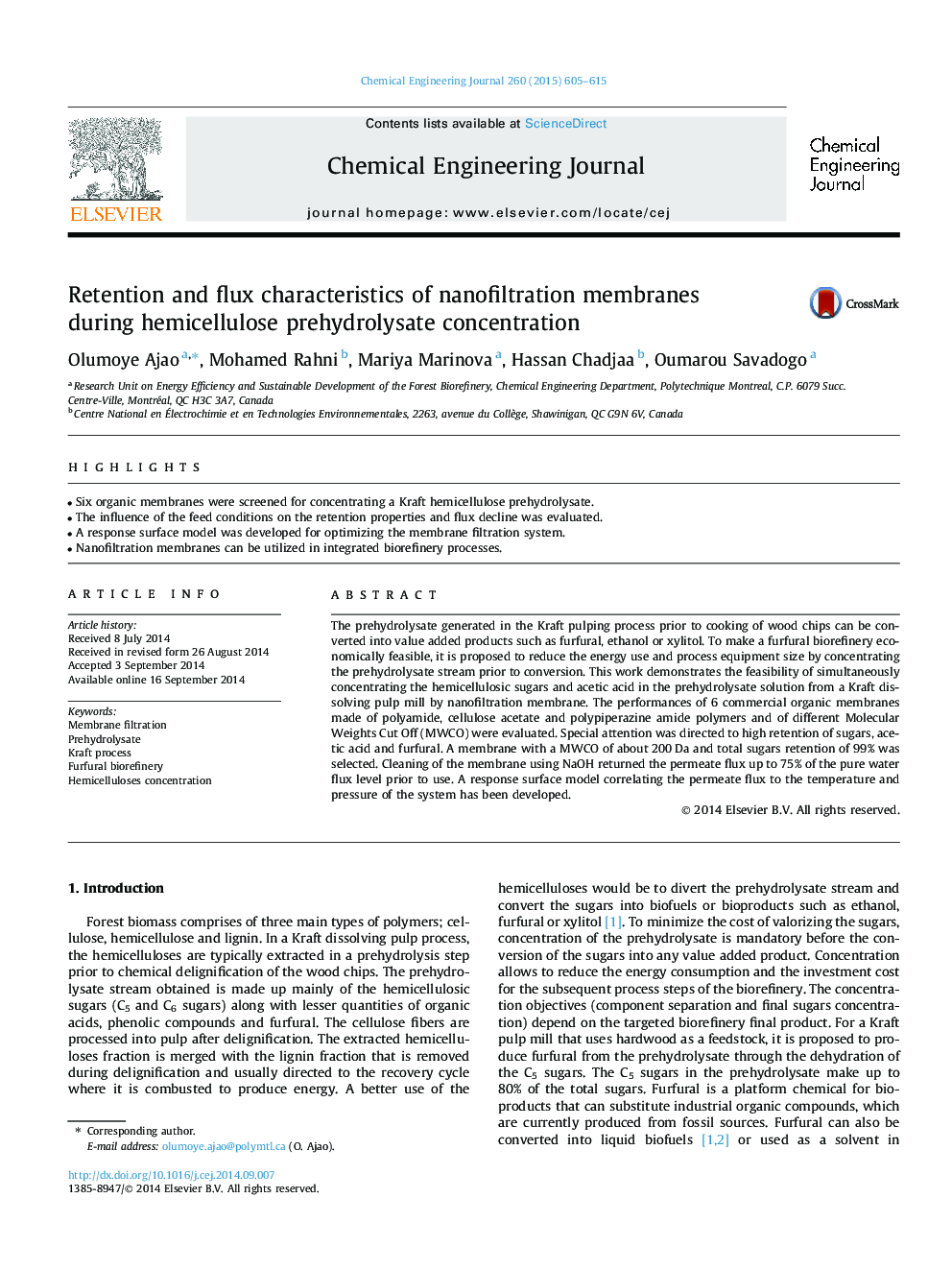| Article ID | Journal | Published Year | Pages | File Type |
|---|---|---|---|---|
| 146769 | Chemical Engineering Journal | 2015 | 11 Pages |
•Six organic membranes were screened for concentrating a Kraft hemicellulose prehydrolysate.•The influence of the feed conditions on the retention properties and flux decline was evaluated.•A response surface model was developed for optimizing the membrane filtration system.•Nanofiltration membranes can be utilized in integrated biorefinery processes.
The prehydrolysate generated in the Kraft pulping process prior to cooking of wood chips can be converted into value added products such as furfural, ethanol or xylitol. To make a furfural biorefinery economically feasible, it is proposed to reduce the energy use and process equipment size by concentrating the prehydrolysate stream prior to conversion. This work demonstrates the feasibility of simultaneously concentrating the hemicellulosic sugars and acetic acid in the prehydrolysate solution from a Kraft dissolving pulp mill by nanofiltration membrane. The performances of 6 commercial organic membranes made of polyamide, cellulose acetate and polypiperazine amide polymers and of different Molecular Weights Cut Off (MWCO) were evaluated. Special attention was directed to high retention of sugars, acetic acid and furfural. A membrane with a MWCO of about 200 Da and total sugars retention of 99% was selected. Cleaning of the membrane using NaOH returned the permeate flux up to 75% of the pure water flux level prior to use. A response surface model correlating the permeate flux to the temperature and pressure of the system has been developed.
